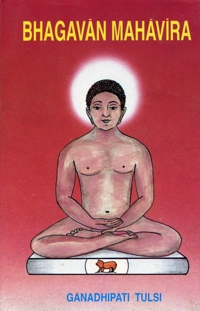| 2 | Thirty Years Of Family Life |

here is a word Samana in the Prakrit language.
Its Sanskrit form sramana has three meanings:
- One who exerts himself or has diligence (Srama).
- One who is calm and maintains equanimity (Sama).
- One who treats every one equally (Sama).
The Sramana culture is grounded in these three main principles namely
- exertion,
- equanimity
- equality.
It has been engaged in the practice and dissemination of these principles from the beginning of civilization. Bhagavan Rsabha was the pioneer of this culture; Bhagavan Parsva was the twenty-third tirthankara in the tradition. He was the prince of Varanasi and was born in 877 B.C. and initiated in 847 B.C.
It was mainly due to Bhagavan Parsva that ahimsa came to occupy the character of a collective spiritual discipline and underwent a qualitative change. Before Bhagavan Parsva, ahimsa was regarded as a personal discipline only. Bhagavan Parsva's efforts transformed it into a social force.
Ahimsa is the modern version of the old concept of Sramana. It includes the three meanings of the term Sramana. One who does not earn his living by his own exertion cannot be a follower of ahimsa, nor can one who does not value peace in life. Similarly, one who does not practise equality cannot practise non-violence.
Bhagavan Parsva gave a momentum to the movement of ahimsa as a result of which the people of Sindhu, Sauvira, Anga, Kuru, Pancala, Kasi and Kausala came under its influence.
The soothing message of ahimsa came as a great relief to the victims of widespread violence in the same way in which the first showers of the summer rain are welcome to those sweating in the heat of the summer sun. The movement, which had once grown weak, was now made powerful! again by Bhagavan Parsva. His campaign to establish ahimsa as a social ideal made him very popular. This made him rise above the limitations of the old sramana tradition. He became a cosmopolitan figure. He attained nirvana in 777 B.C.
The rising sun floods the whole world with light, but when it sets, everything is again plunged into darkness. This drama is enacted every day. Lord Parsva appeared on the stage of history like the rising sun and enlivened the world with the light of ahimsa but soon after his nirvana the movement of ahimsa began to grow thin. His followers became inactive. Let us keep in mind the elementary truth that every particle of the world shines by the light of the sun and that as soon as the sun sets, the particles grow dark. That has been the fate of the history of mankind also.

The appearance of a great man on the scene opens a new chapter in history, but soon after his death, historical progress slows down and ultimately comes to a standstill. Those who illumine the world with their own light are very few indeed and the world seldom shines by its own light. Hardly two hundred years had gone by after the nirvana of Bhagavan Parsva when the steady onward movement of ahimsa lost its force. The dark forces of inaction, disquiet and inequality engulfed the people so much so that they began to await eagerly a new dawn to appear.
 Acharya Tulsi
Acharya Tulsi

